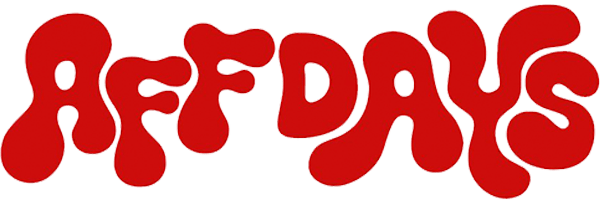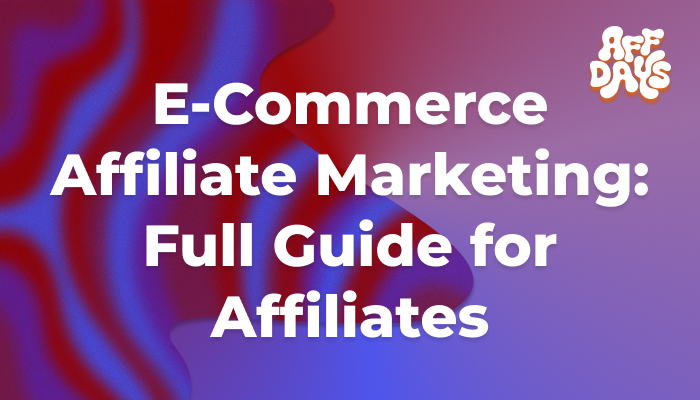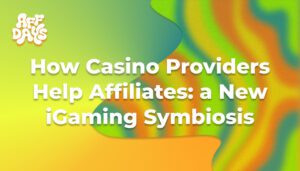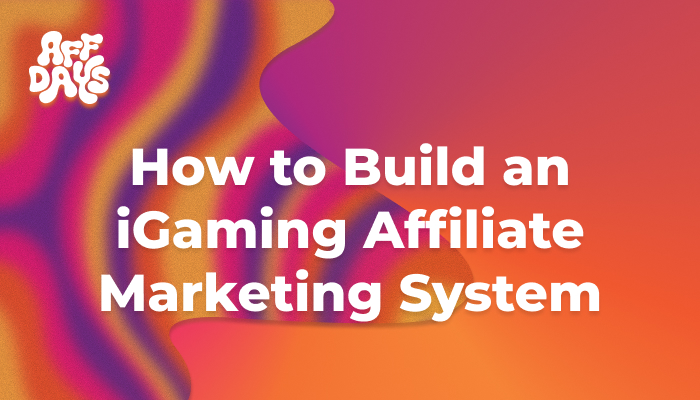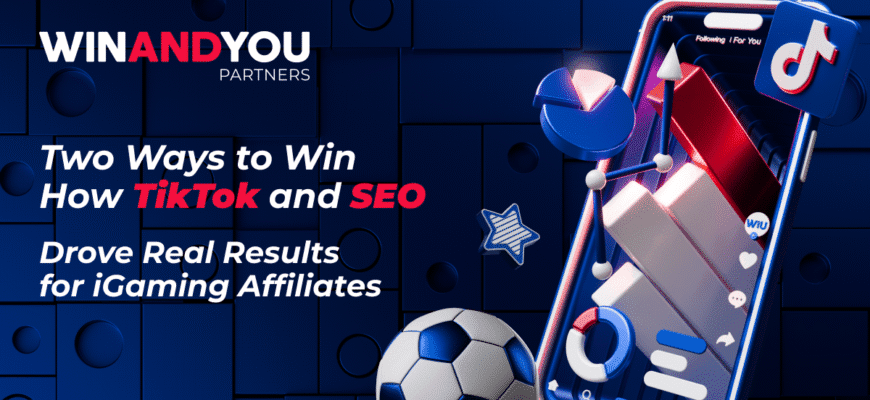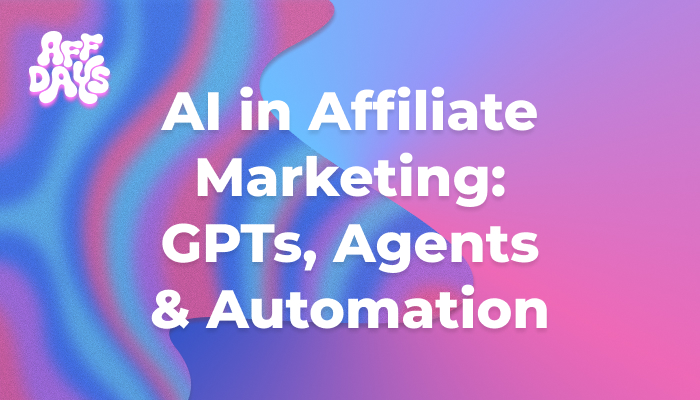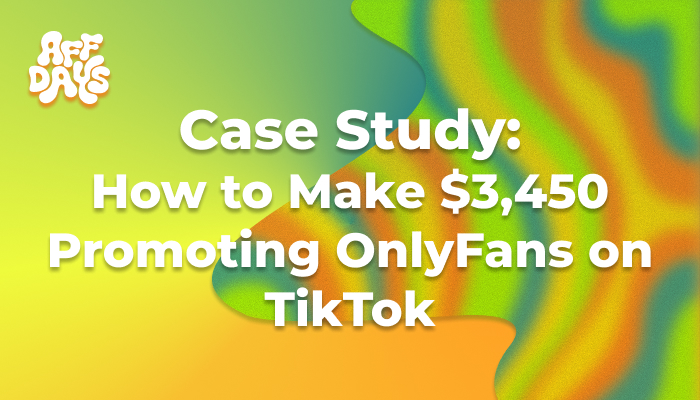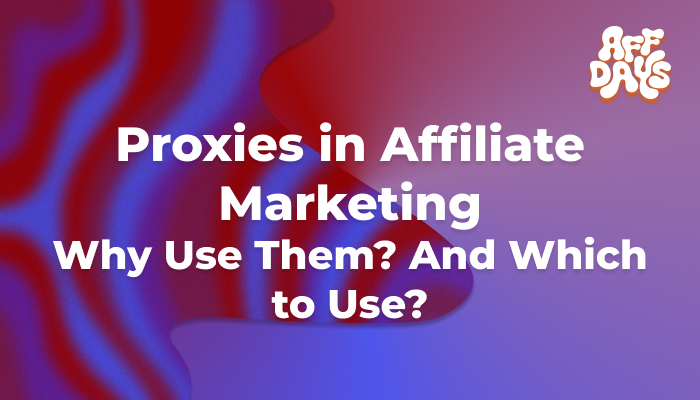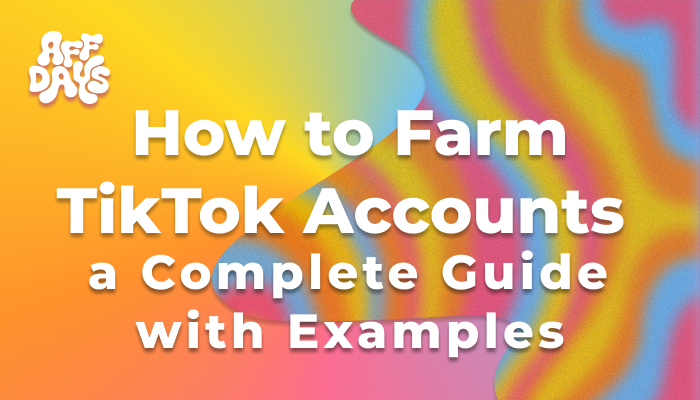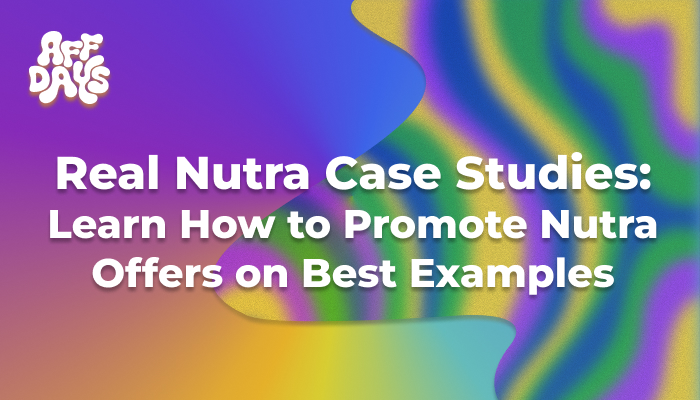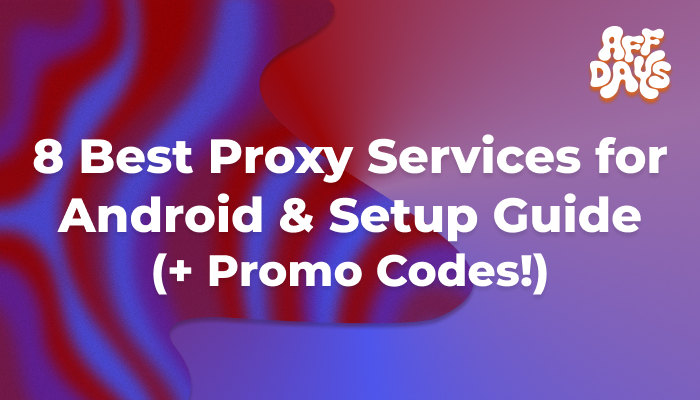E-commerce affiliate marketing is a classic that remains relevant. Some people chase trendy verticals, but experienced affiliates steadily earn money from proven offers. Cosmetics, gadgets, health products — demand for them doesn’t drop, which means there’s always an opportunity to enter and profit. The main thing is to choose the right offer, affiliate network, and traffic source.
Learn how to drive e-commerce offers for maximum profit, which combinations work best, and what to focus on if you’re just entering this niche.
- How to Work in This Niche
- What Types of Product Offers Exist
- White-Hat
- Gray-Hat
- Black-Hat
- Traffic Sources and Features of Promotion
- Facebook Ads and TikTok Ads
- Contextual Advertising
- Teaser Networks
- Push Notifications
- SEO and Doorways
- Top 3 E-Commerce Affiliate Networks
- OFFERRUM
- AFFSTAR
- RocketProfit
- How to Drive Traffic to These Offers
- Case Studies
- Case study #1: ₽20,231 profit on roses via MyTarget
- Case study #2: $1,493 profit in 20 days on Patek Philippe watches
- Case study #3: $1,265 profit in 7 days on TikTok
- Conclusion
How to Work in This Niche
This is a niche that social media “bury” every year. Although this niche has lost profitability over the past few years, its turnover has grown, and it clearly has no plans to die out. To understand why this is happening, you need to know the pros and cons of this vertical.
Pros:
- Easy entry.
Affiliate markeing here is a good option for beginners because it doesn’t require complex technical solutions. There are almost no expenses for resources (cloaking, proxies, etc.), and ad accounts live longer due to more lenient moderation. - Simple ad creatives.
Promoting these offers doesn’t require complex ad creatives production. You can take someone else’s footage, add new voiceover or text, and use ready-made templates. Successful ad creatives are easy to adapt to different offers. - Accessible moderation.
Unlike gray and black verticals, e-commerce offers are not as strictly checked by ad platforms. If the ad creative doesn’t contain prohibited content, it passes moderation faster and without extra costs. - Easy scaling.
Lower risk of ad account bans allows you to calmly scale successful combinations, increasing budgets and expanding GEOs.
Cons:
- Low ROI.
Payouts for leads are lower than in nutra or gambling. At the same time, approval rates are similar, which reduces campaign margins. You can earn on volume, but with low ROI. - High competition.
Launching a campaign is easy, so not only affiliates but also big brands work here. This overheats the auction and makes ads more expensive. - Marketplace pressure.
Users are used to buying products on marketplaces where prices are often lower. This reduces conversion because people go looking for an analog on Amazon or famous marketplace.
Working with this vertical means finding popular offers, testing different traffic sources, and scaling combinations while they are profitable. It’s important not just to choose a product but to understand who to sell it to and how.
The process usually looks like this:
- first, choose an affiliate network and offer with a high approval rate;
- test combinations — ad creatives, landing pages, approaches;
- if the result is good, scale; if not — analyze and refine.
Speed is crucial here — successful combinations get copied quickly, and offers may burn out in a couple of weeks. You also need to stay up to date, as trends change instantly and seasonality plays a big role.
What Types of Product Offers Exist
The offers are divided into three categories: white, gray, and black. The difference lies in legality, promotion rules, and risk level for the affiliate. Each type has its own audience, traffic sources, and strategy.
White-Hat
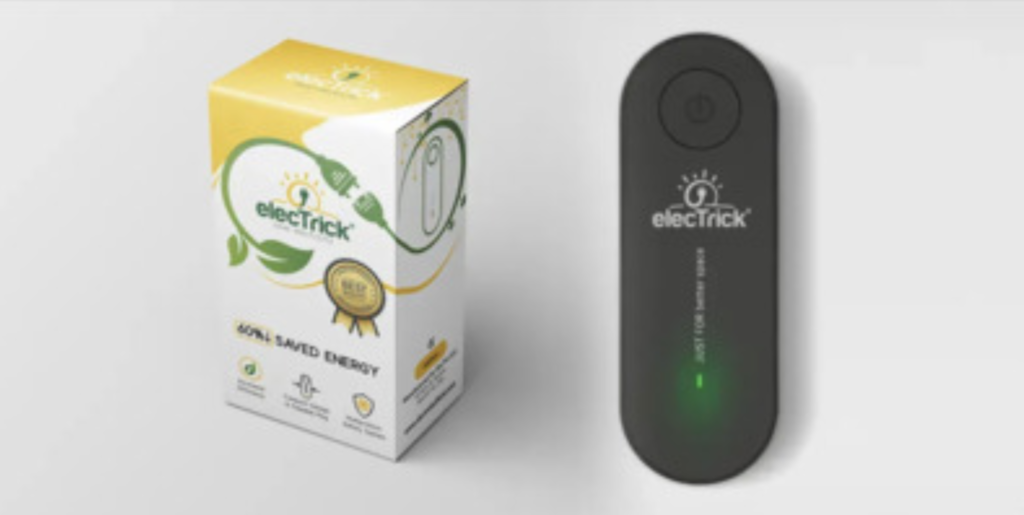
These are official products that can be advertised without restrictions: cosmetics, household appliances, clothing, and gadgets. They are approved by advertising platforms, but competition is high, and margins are often lower than in other categories.
Gray-Hat
These are products that are not directly prohibited but raise concerns with advertising platforms. For example: dietary supplements, weight loss products, anti-aging cosmetics, bioactive additives. Their promotion often involves clickbait ad creatives and pre-landing pages, and deceptive schemes, which is why accounts can get banned quickly.

Black-Hat
These are products prohibited for advertising on most platforms: counterfeit and replica brands, fraudulent schemes, extreme “miracle” remedies for weight loss and potency. Working with such offers is risky, but profitability can be high.
The choice depends on your strategy: white-hat offers are more stable but less profitable, while gray-hat and black-hat offers are more lucrative but require bypassing rules and a higher tolerance for risk.
All three categories of products can be promoted anywhere, in Baltic states as well. This article covers features of working with these GEOs.
Traffic Sources and Features of Promotion
The choice of traffic depends on the offer type, budget, and the level of risk the affiliate is ready to take. Below are the main sources.
Facebook Ads and TikTok Ads
This option suits white-hat and gray-hat offers. The main advantages are quick launch, precise targeting of the target audience, and high traffic volume. But there are serious limitations — strict moderation, high requirements for ad creatives, and the risk of account bans (although you can easily purchase them).
Facebook and TikTok deliver maximum traffic when using native-style ad creatives. On TikTok, short videos showcasing the product are popular, while Facebook allows testing various ad formats.
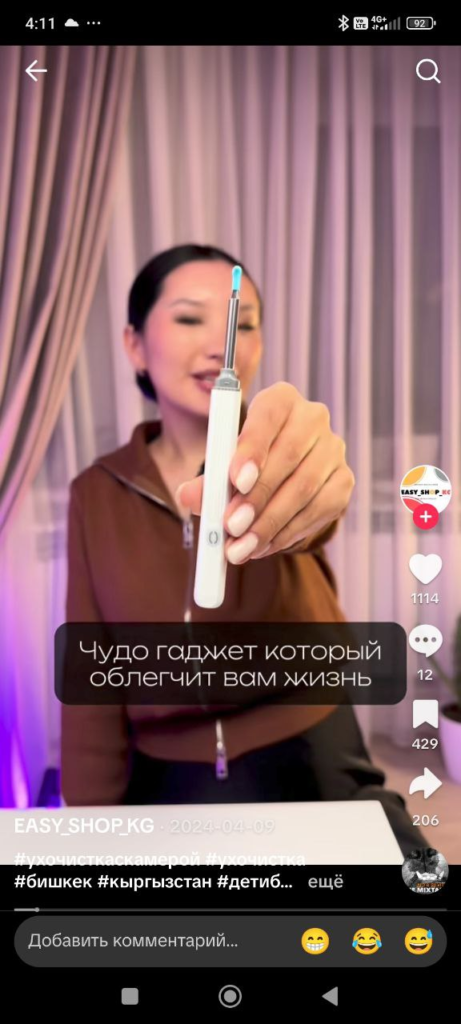
Contextual Advertising
Contextual advertising is suitable for white-hat offers, especially if the product is expensive and in demand. Clients searching for a product are already prepared to make a purchase, so the conversion rate is higher than with other traffic sources.
But there are also disadvantages: high cost per click and strict requirements for landing pages. If the landing page violates the advertising system’s rules, it may be blocked.
Teaser Networks
Teaser advertising (available in Adsterra, PropellerAds, MGID) is often used for gray-hat and black-hat offers. It grabs attention with flashy headlines and provocative images. Traffic from teaser networks is cheaper than contextual or targeted ads, but its quality depends on the chosen platforms.
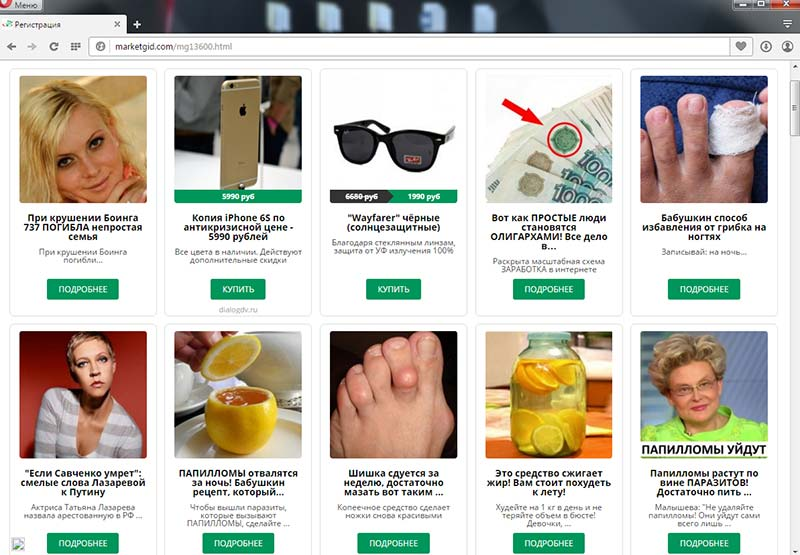
Main problems of this channel — low audience trust and a large number of bots. To get good results, you have to carefully test ad creatives and filter platforms.
Push Notifications
Push advertising works with gray-hat and black-hat offers, allowing you to get cheap traffic with a fast launch. It is most often used for aggressive marketing: flash sales, limited-time offers, special discounts. This source also has drawbacks — low user engagement, fast database burnout, and a high rate of complaints about intrusive ads.
SEO and Doorways
SEO is suitable for promoting white-hat and gray-hat offers, while doorways are used for gray- and black-hat. You can create a website, and if it’s well-optimized, it can consistently generate traffic from search engines without ad spend (though some money might be planned for backlinks acquisition). But SEO takes time and effort. Doorways allow you to get fast traffic, but such sites quickly fall under search engine sanctions.
Top 3 E-Commerce Affiliate Networks
When choosing a network, consider several factors:
- Offer categories and available GEOs.
- Minimum payout amount and payout frequency.
- Hold conditions and traffic restrictions.
- Quality of support and convenience of the dashboard.
The best way to find a suitable network is to test several and choose the one that provides the highest profit for your working style.
OFFERRUM
OFFERRUM is one of the largest affiliate networks in this niche, with dozens of offers in the niches of beauty, health, weight loss, and electronics. Known for stable payouts, favorable conditions for webmasters, and transparent analytics.
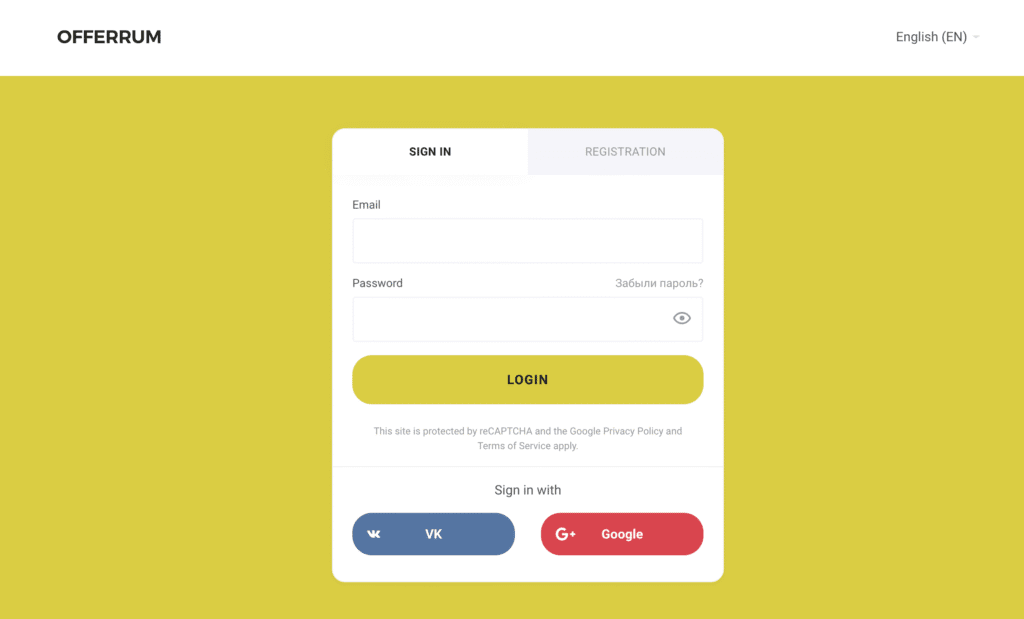
What it offers:
- Over 300 e-commerce offers, including exclusives.
- Payment models: CPA, CPL, RevShare.
- Available GEOs — CIS, Europe, Asia.
- Payouts — to bank cards, crypto, e-wallets.
- Support responds quickly and operates 24/7.
OFFERRUM is suitable for both beginners and experienced affiliates. It provides free tools for work: tracker, pre-lander generator, and API for automation.
AFFSTAR
AFFSTAR is an affiliate network specializing in health, beauty, weight loss, and electronics offers. Known for stable payouts and a high approval rate.
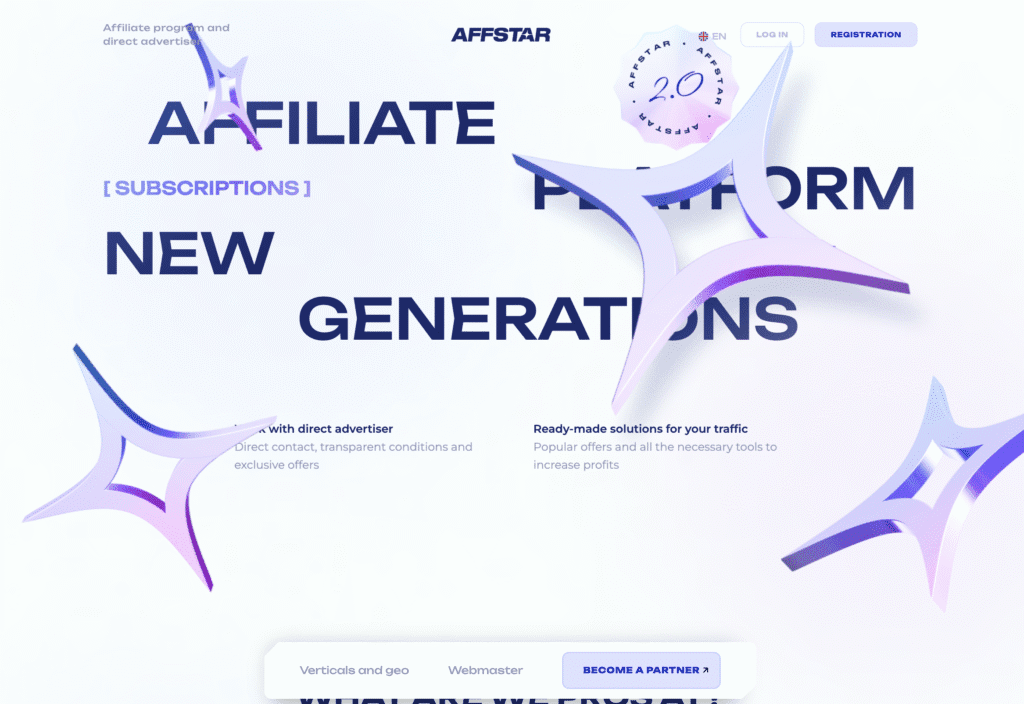
What it offers:
- Around 200+ in-house offers with high ROI.
- The highest payouts in the CIS region.
- Individual approach to each campaign.
- Wide variety of verticals.
- GEOs: CIS, Europe, Asia, Latin America.
- Work models: CPS, CPA, CPI.
AFFSTAR is valued for its convenient conditions for affiliates, flexible payout options, and personalized support for each webmaster.
RocketProfit
RocketProfit is an international CPA network with a wide selection of offers.
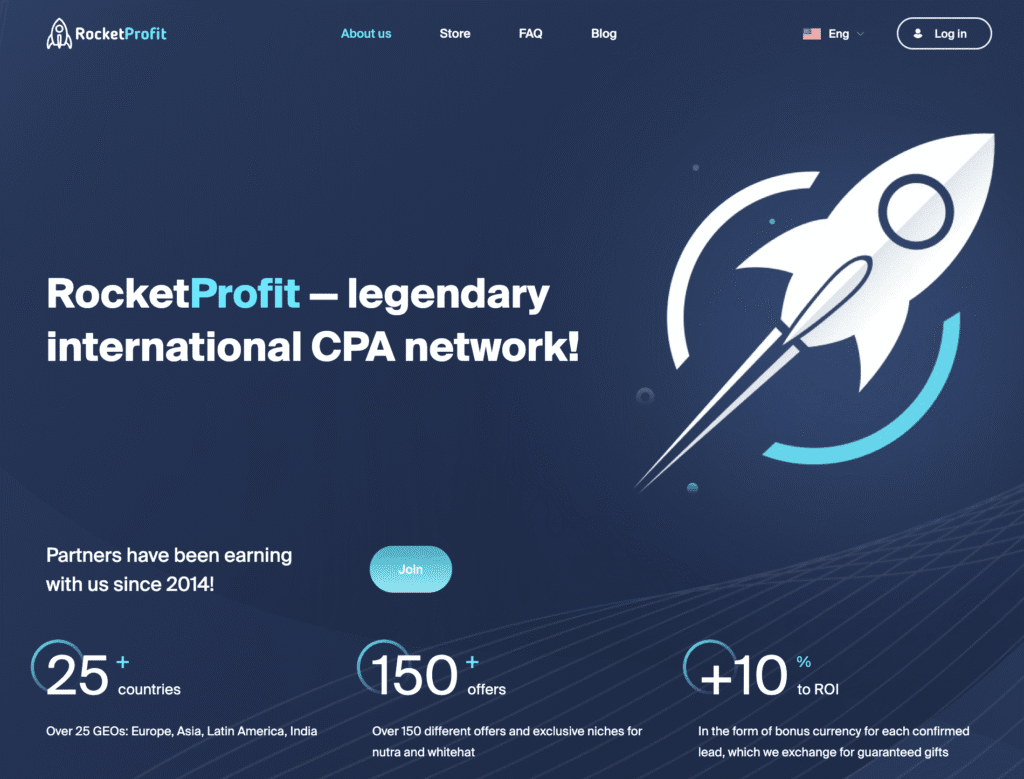
What it offers:
- 150+ offers with high conversion and guaranteed approval
- Presence in over 25 countries: Europe, Asia, Latin America, India
- Free promo assistance and an exclusive loyalty program
- 24/7 support and 1,500 call center employees
- Daily payouts
RocketProfit provides affiliates with flexible cooperation terms and high rates. Suitable for both beginners and experienced media buyers.
How to Drive Traffic to These Offers
Promoting these offers is not just about setting up ads — it’s a full-cycle process: from offer selection to scaling successful funnels. It’s important not only to find the right product but also to test it, create effective ad creatives, and optimize your ad campaigns.
Offer selection. Before launching traffic, you need to choose an offer that will convert. Evaluate:
- Product relevance: seasonality, demand in a specific region
- Affiliate network terms: payout per lead, hold period, restrictions
- GEO and competition: not all products perform equally in different countries
It’s best to start with offers that have already shown good results for other affiliates. These are usually found in popular e-commerce networks.
Testing. Before spending large budgets, test the funnel. A minimal test is 50–100 leads. Check:
- Landing page conversion. If traffic is coming but there are no leads, try another landing
- Ad creative effectiveness. Compare different images, headlines, offers. More on ad creatives for Nutra here.
- Traffic profitability. Track lead cost and which sources bring profit
Optimization. When the test shows results, start lowering the lead cost and increasing profit. Do this by:
- Turning off ineffective ads and audiences
- Selecting higher-quality creatives
- Changing the landing page if conversions are low
Scaling. If the funnel works, you can scale up traffic volume. For example:
- Expand to new GEOs, test the offer in other countries
- Add new ad sources
- Use retargeting to bring back users who didn’t convert the first time
You need to constantly monitor metrics and adapt to changes. Even successful funnels can burn out quickly if you don’t test new angles.
Case Studies
Affiliates consistently earn money using different strategies in this niche. These case studies feature real examples of funnels, traffic sources, conversion rates, and final numbers.
Case study #1: ₽20,231 profit on roses via MyTarget
- Offer: Royal Hybrid Roses (₽168)
- GEO: Russia
- Source: MyTarget
- Period: December 14–20
- Spent: $350.90
- Revenue: $553.21
- Profit: $202.31
- Approval rate: 40%
- ROI: 54.29%
Initially tested Facebook — turned out expensive and ineffective. Switched to MyTarget, where leads cost $1.50–2.30 with a payout of $8.50. Retargeted only women 50+ — approval rate increased, and traffic became cheaper.

The main traffic source was CPC — MyTarget delivered more volume than CPM. Cloaking was used via the Keitaro tracker by creating a clean white page. The campaign followed a “dayparting” strategy — ads ran in the morning and evening when conversions were better.
During the week-long test, the team spent $350, earned $553.21, and achieved an ROI of 54.29%.
Case study #2: $1,493 profit in 20 days on Patek Philippe watches
Offer: Patek Philippe Sky Moon Tourbillon watch + Alligator wallet
GEO: Russia
Traffic source: Instagram Ads
Period: 01.01.2022 – 22.01.2022
Spent: $1,241
Revenue: $2,735
Profit: $1,493
Approval rate: 60.8%
ROI: 120%
The ad campaign was launched from one trusted account. Targeting: men 22+, landing page taken from the affiliate network. Creatives: short YouTube videos, focused on style and prestige.

The funnel worked from day one, but then lead costs increased.
Solution: stop the ads, duplicate the best ad sets, relaunch the campaign the next morning.
This helped re-enter the auction with a click cost of 10 cents.
In 20 days, they earned 91,000 RUB with an ROI of 120%. The key was to quickly adapt creatives and constantly monitor lead costs.
Case study #3: $1,265 profit in 7 days on TikTok
Offer: Venzen cushion foundation
GEO: Kazakhstan
Traffic source: TikTok
Period: 02.07.2022 – 08.07.2022
Spent: $1,251
Earned: $2,517
Profit: $1,265
Approval rate: 50%+
ROI: 101%
The affiliate had previously run this offer to Kazakhstan as part of a team and decided to repeat the campaign solo. Used an agency ad account from the affiliate network, payment model — per conversion. Targeting — women 35+.
Creatives were made in-house, including voiceovers and product shots. The main approach — “before and after,” with hard contrasts working until the end of the campaign, while softer creatives either didn’t convert or got banned. Standard landing page from the affiliate network, offer is white, so no cloaking was needed.
The funnel performed excellently — $1,265 profit in 7 days with a 101% ROI. A great example of how working offers can be scaled into new tests.
Conclusion
E-commerce is a niche that remains relevant despite growing competition and new challenges. The key is to choose the right offers, test funnels, and scale successful campaigns while they are still profitable. Experiment with traffic sources, follow trends, and analyze results — this way, you can build stable earnings in this vertical.

Ksenia has extensive hands-on experience in affiliate marketing, having worked as a media buyer and affiliate for several years across multiple verticals. Throughout her career, she managed traffic from a wide range of sources, tested funnels, and collaborated directly with advertisers and networks.
For the past six years, she has also been writing in-depth articles, reviews, and analytical guides about affiliate marketing. Her work has appeared on well-known industry blogs and platforms, where she covers topics such as traffic sources, compliance, creatives, tracking, and campaign optimization.
Today, Ksenia combines practical experience with editorial expertise, contributing as a guest expert to various affiliate marketing projects and helping educate both beginners and experienced affiliates.
